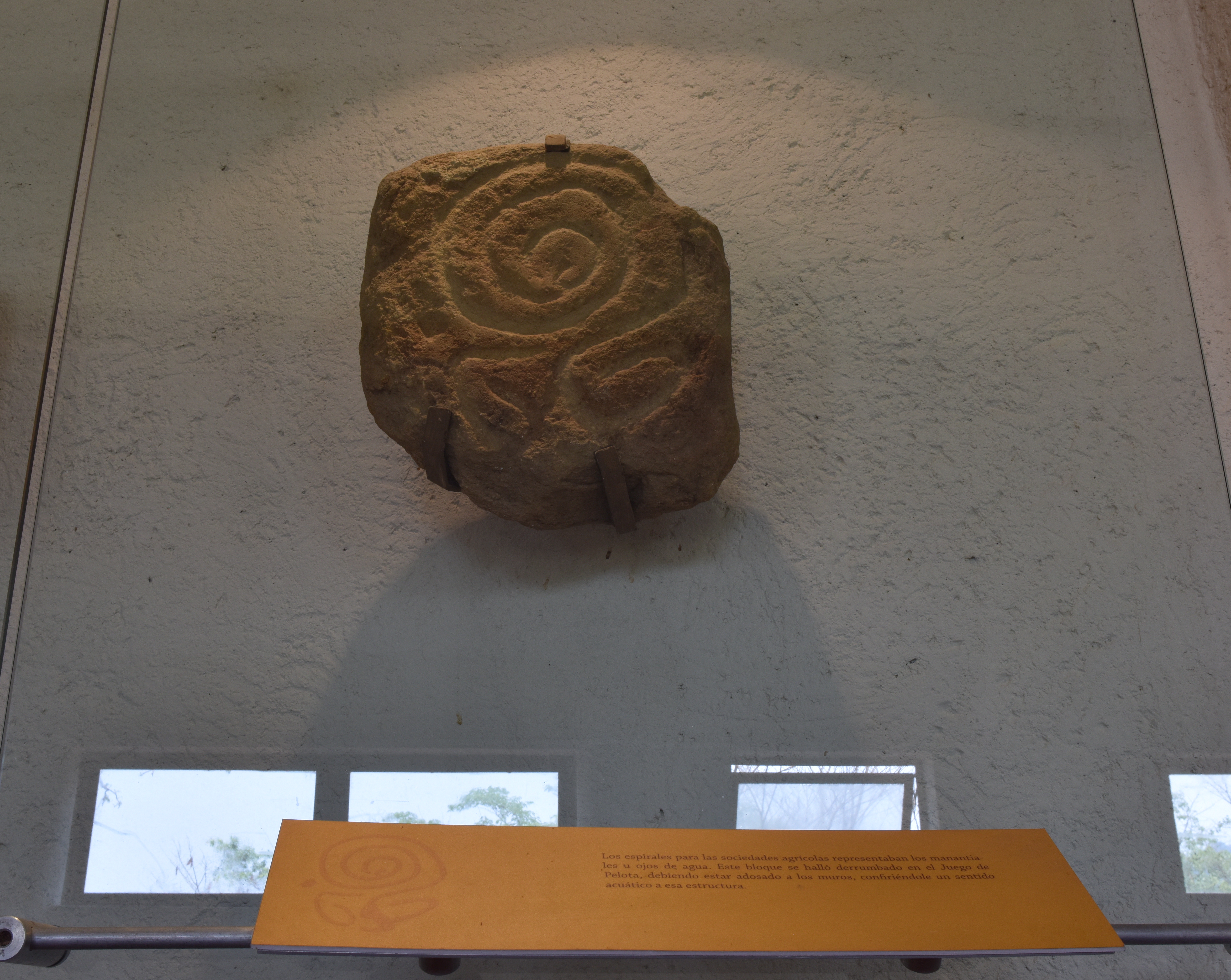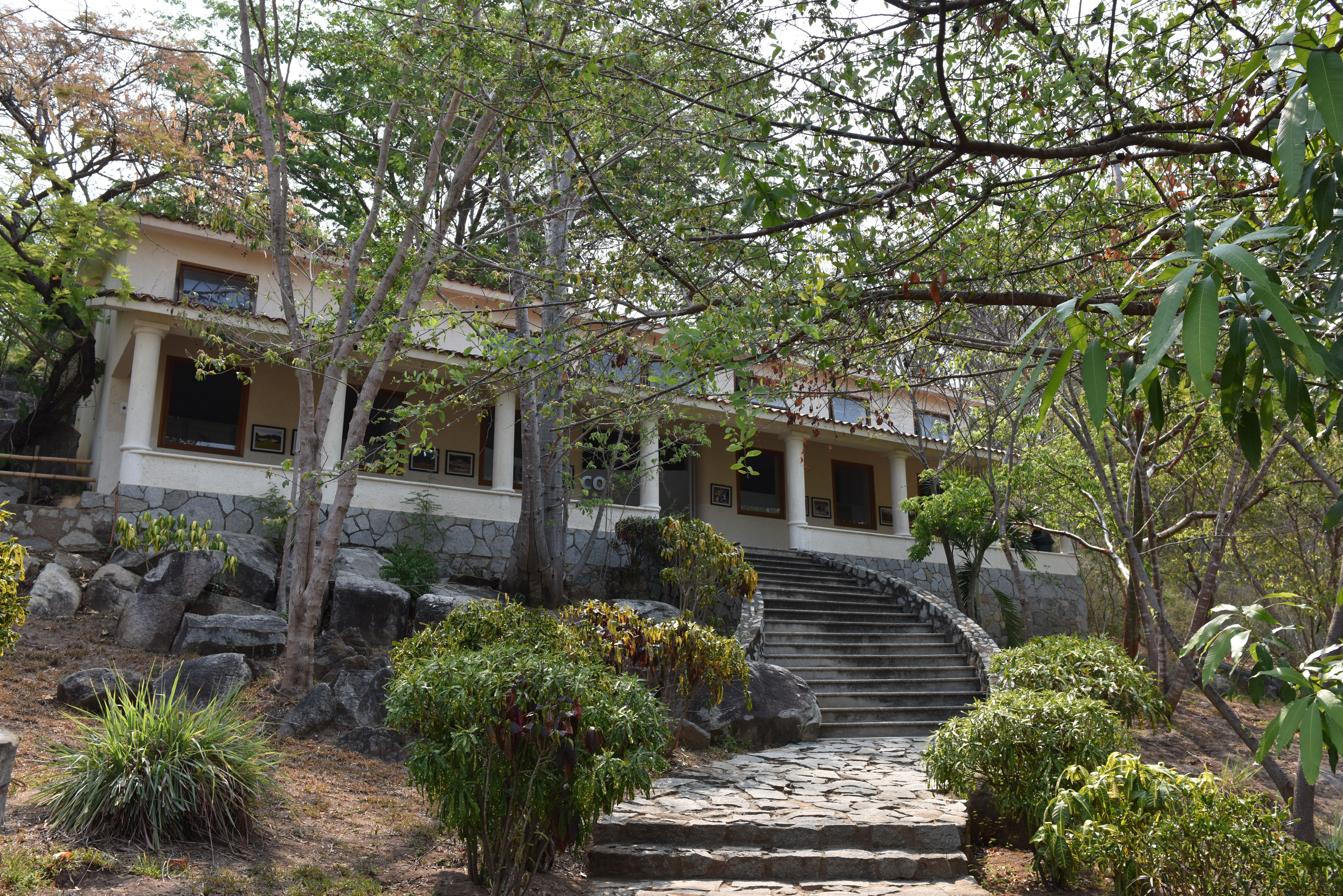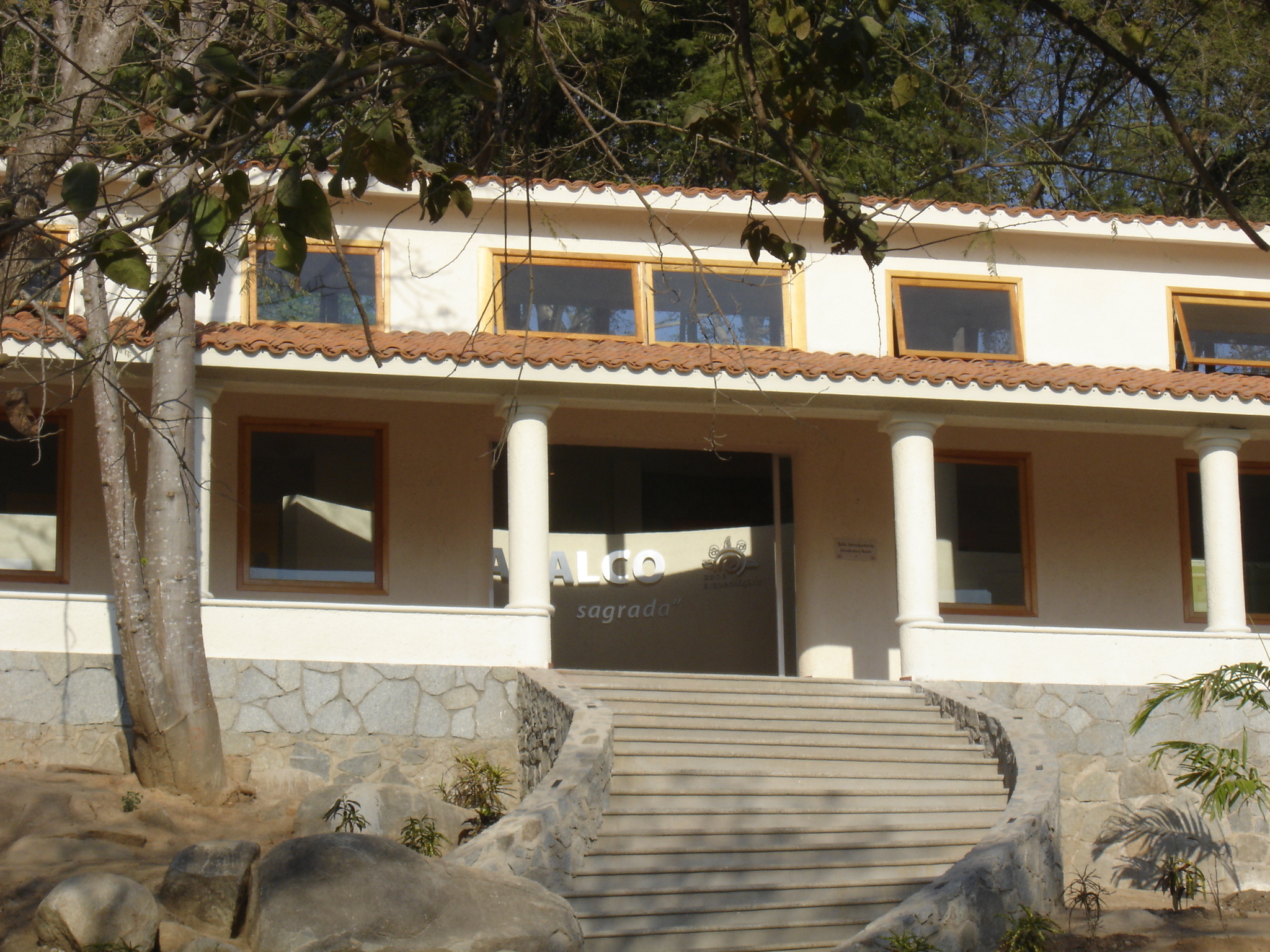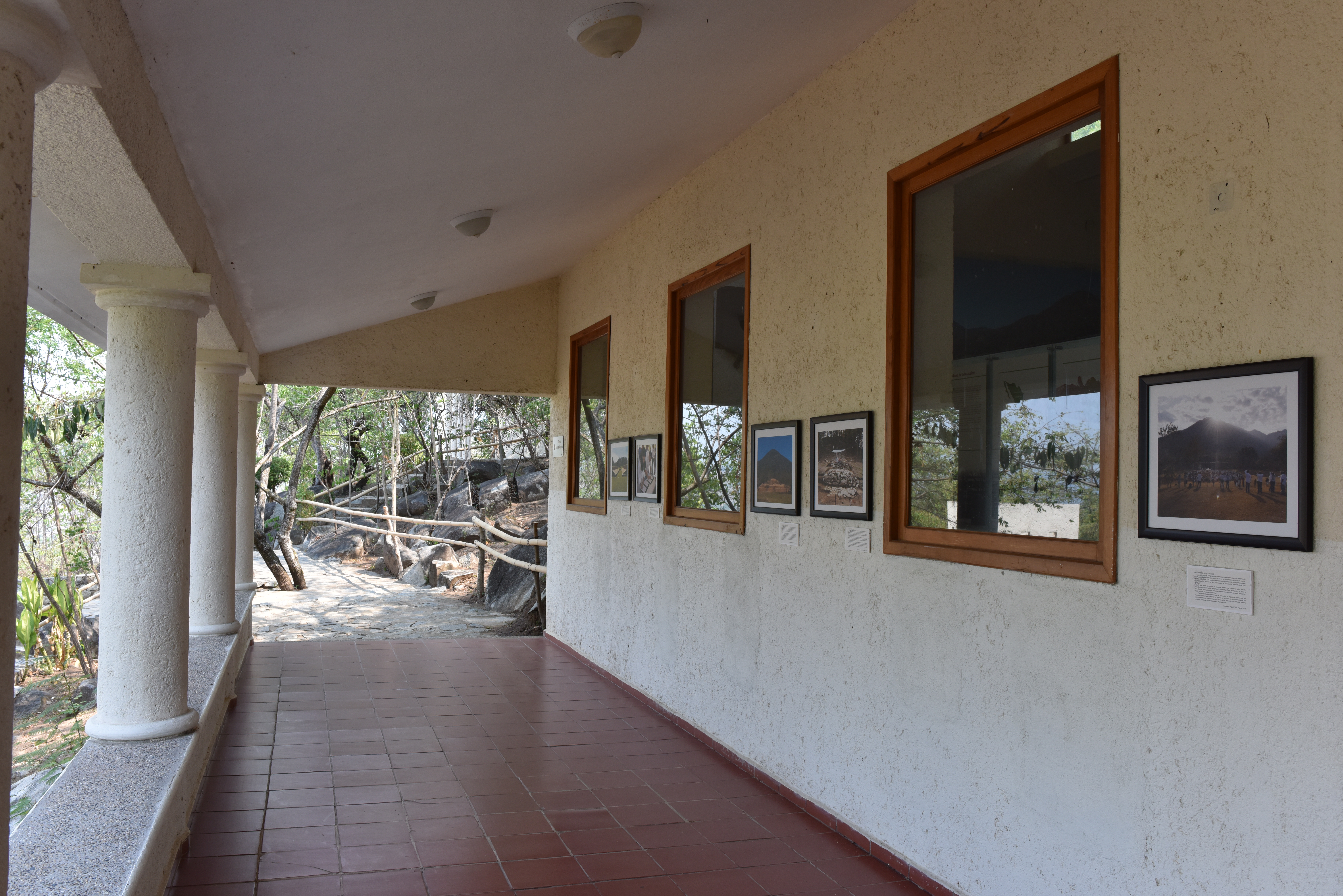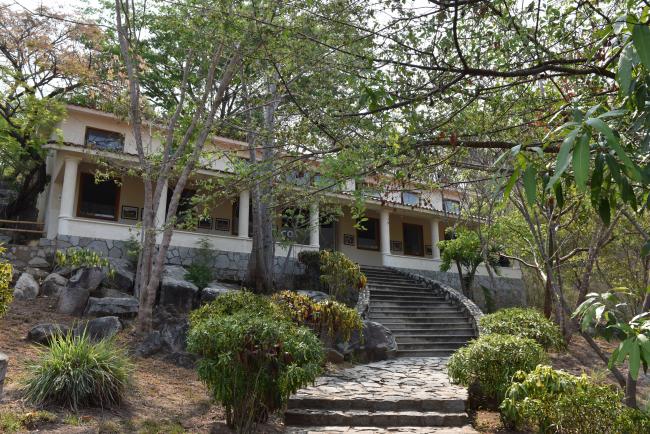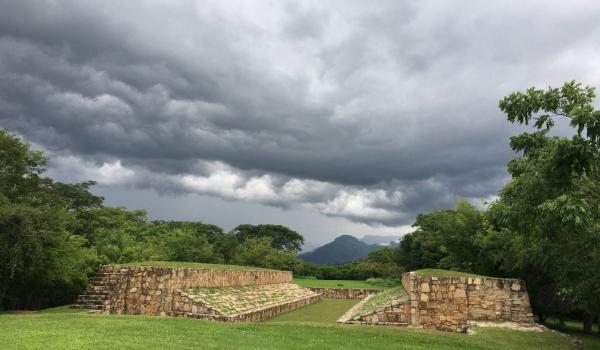Tehuacalco was the name given by Nahua groups who arrived after the conquest to take the place of the local peoples who had disappeared. The name has several potential meanings: “place of the stone boxes,” referring to the great pyramids or to the ritual mortars present on several of the surrounding blocks, “place of the priests’ houses,” referring specifically to the presence of temples or “place of the sacred water,” a meaning inferred from the site, which was a great water sanctuary. The site’s environment is rich and varied with a great abundance of water.
The introductory gallery and the archeological site of Tehuacalco were opened to the public on December 16, 2008. Tehuacalco was known as Yopitzingo in historical sources. The importance of the site lies in the fact that it was one of the few states which managed to remain independent from Tenochtitlan. The gallery and two small buildings for administration and services clearly reflect the ancient architectural style: stonework, porticoed passages, longitudinal benches, columns, tiled roofs and wooden frames. Special care was taken not to disturb the slope of the land or to stand out from the appearance of the ancient structures.
The story told by the gallery was developed to put the archeological site in context. Tehuacalco was a pre-Hispanic settlement covering nearly 200 acres located in the Sierra Madre del Sur at the far end of a long corridor linking the Central Highlands to the coast of the Pacific Ocean. It consisted of a ceremonial civil center dedicated to the worship of water and the hills, with a surrounding population, as well as temples, caves and rock carvings surrounding the central part of the settlement. The display describes the sacred spaces, the pre-Hispanic groups which inhabited this place, its architecture, the rock carvings, the importance of the horizon and of astronomical observation.





